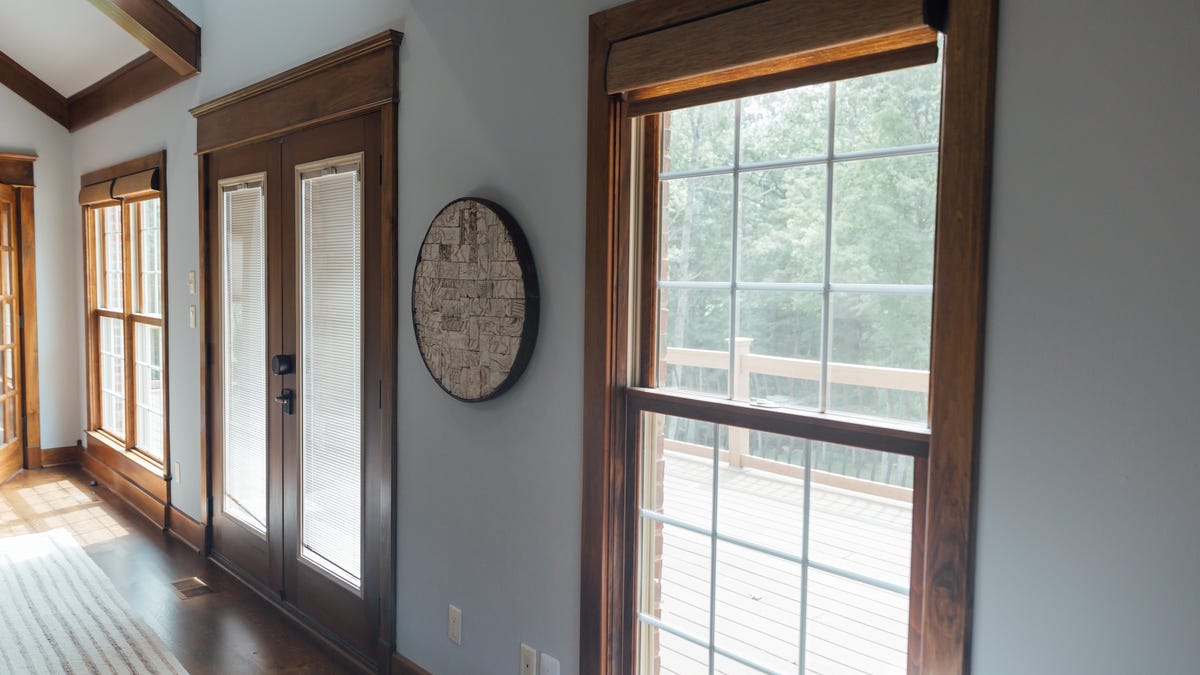6 tips for making the most of smart shades
How to make smart shades work for you, from when you order them to when you use them.

Smart shades are one of the most useful and stylish gadgets in any smart home. There's nothing quite so dramatic as punching a button and watching a whole interior space open up with natural light.
But they're also a big investment. Purchasing, installing and using them can be a little overwhelming. I've spent the last few weeks ordering a dozen shades and setting them up at the CNET Smart Home, and here are six tips I picked up along the way.
1. Before you order, check your molding
Measuring your windows and deciding on mounting inside or outside the trim around your window are basic steps before you send in your order. But one thing many people forget is to check the window molding itself -- making sure it is solid enough to be screwed into, and that its shape and depth will work with your shades.
While the Smart Home's molding had enough depth for smart shades (which are often a little bulkier thanks to battery packs), the overhang wasn't perpendicular to the window, which meant the shades didn't hang straight down. We solved this problem by getting roller shades, rather than honeycombs: a simple solution we wouldn't have known we needed without checking beforehand.
2. Decide on integration
The next step before ordering is deciding which products you want. I settled on Lutron Serena Shades simply because they have better integration than any other shades on the market. For the Smart Home, this integration -- with lights, thermostats and Siri voice control -- is core to our vision. If all you're looking for is a reliable motorized shade with a remote control, other options are out there. All it takes to find your desired features is careful research and price comparison.
I installed smart shades in the places they would make the most difference -- not only on difficult-to-reach windows, but also in rooms with a lot of natural light.
3. Take full advantage of the natural light
The CNET Smart Home has dozens of windows all over the house, but I wanted to use connected shades where they'd make the biggest impact. I chose the central living room and dining room. It's a wide open space with tons of natural light. Not only will automated shades working in concert look striking in this area -- they also complement the space, making it feel even more open.
Remote control is the most obvious use of connected shades -- and for good reason. In a large room with many windows, a single button press is way more convenient than manually opening the shades.
4. Use the remote control where it counts
The other big reason people get smart shades is remote control. You can open or close them without touching them. That means shade automation is perfect for out-of-reach or large windows. The CNET Smart Home had three such windows where automation was a must-have. Two were about 13 feet off the ground, and one was recessed behind the kitchen sink. For windows like these, manual shades simply aren't practical.
Installing many shades even in a single room can take a lot of time and effort. Be prepared!
5. Set aside the tools, space and time for the project
So you've ordered your shades, and it's time to prepare for the install. I set up a dozen smart shades at the CNET Smart Home, and it took around 8 hours. Even with fewer shades, between removing the old window treatments, installing the new, syncing them to the app and setting up voice control, you're looking at a big project. Make sure you give yourself the appropriate time, the space to spread out and the tools (especially a power drill) to get the job done.
Once the shades are up, there are plenty of features to take advantage of. It just takes a little time to explore the possibilities.
6. Use them to their full potential
Once you have smart shades set up in your house, it's easy to just use the remote or voice commands to control them. Why? Because that's just a smarter version of how you've always used shades. But many of these devices have other capabilities, like scheduling and integration with thermostats and lights. Give yourself time to test these features out. Even something as simple as scheduling could change the way you use shades in your home -- like turning them into a more natural alarm clock, or adaptive environment control.
Once your smart shades are up and running, all the preparation and work has paid off. There's nothing quite so satisfying as finally controlling your shades with the press of a button or a voice command to Siri. Now all that's left is to find your next big project.

